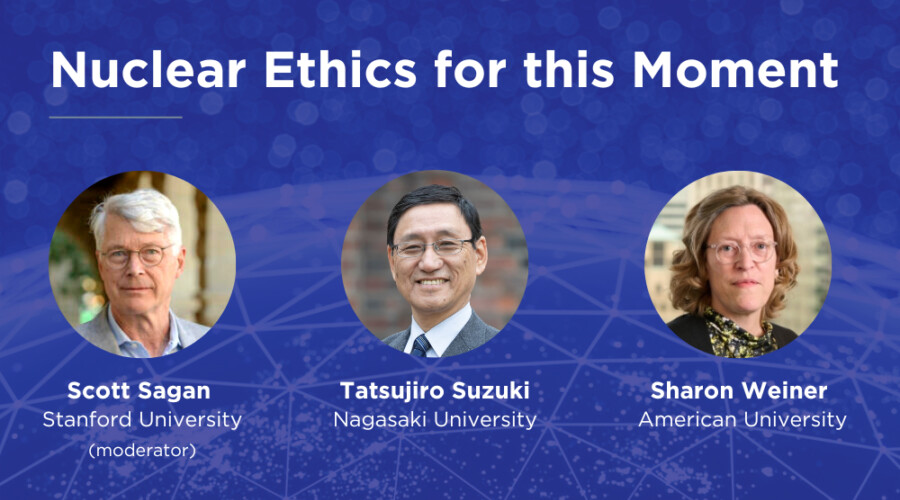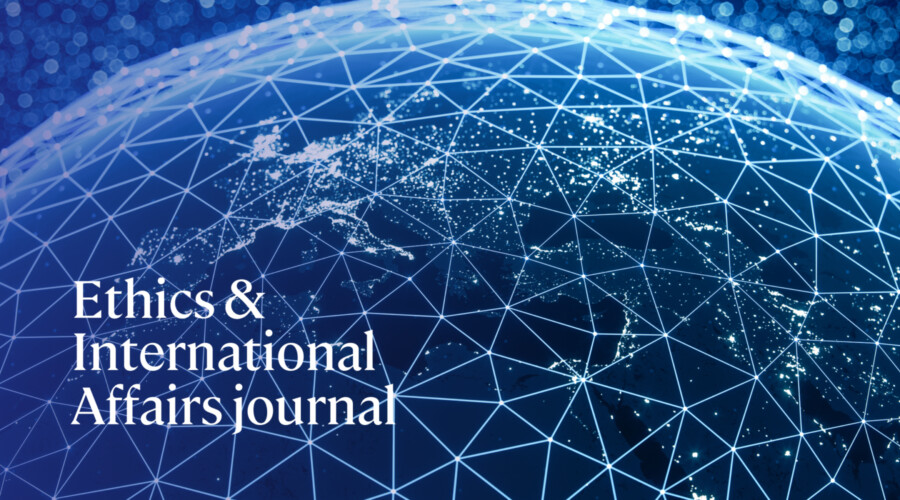Biological security knows no boundaries. As the High-level Panel on Threats, Challenges and Change reported, anyone of more than 700 million annual airline passengers could find themselves being an unwitting carrier of an infectious disease. Given that the incubation times of many diseases is shorter than even the longest international flight, the potential for carriers—unwitting, or perhaps deliberately self-inflicted—to enter any country undetected is high.
Today, there is no greater threat posed by nonstate actors than that of bio-terrorism. Our biological security is fragile, and its erosion through the natural and man-made spread of infectious disease poses a mounting challenge to national and global public health systems, as well as to international security. But equally, there is no issue that illustrates more vividly the need for and the potential of global cooperation—or the hope it can provide.
Here, the analogy to eradicating disease is apt. It is, in the technical terms of economists and social scientists, a ‘missing link public good’—i.e., a benefit to all that can only be assured when all links in the chain are secured, when the very last country has been able to eradicate an existing disease. The tremendous accomplishments of the global public health community in eradicating smallpox is an overused but nevertheless compelling reference point. In bio-defense terms, every state and population is vulnerable while any one state or population remains under-defended against the spread of infectious disease. No amount of national defense can alter this basic reality.
As the High-Level Panel argued, interconnection provides a compelling case for cooperation to address both threats to international peace and security and the challenge of development—a challenge whose successful answer, quite apart from its intrinsic merit (eloquently elucidated in this Roundtable by Ambassador Sen) is also integral to any sustained, effective collective security system.
The obstacles to development and the threats to international peace and security are various, and several have already been addressed by other Roundtable participants. Nonetheless, we should not overstate the threat posed by nonstate actors. In many regions of the world, and at the global level, the potential for inter-state war, the reality of states’ aggression against their own citizens, and the mounting tensions between different cultures and religions continue to pose a two-sided challenge: they directly erode both state and human security and they undermine the potential for cooperation on a range of global challenges.
There is no doubt, however, that nonstate actors are of increasing importance to both security and development—as both positive and negative forces. On the positive side of the ledger, the role played by domestic and international NGOs in combating poverty, disease, and conflict is of growing importance. On the negative side, more and more opportunities are available to organized crime syndicates and networks and terrorist organizations—domestic and international—to move within and between the sinews of interconnection and to manipulate those sinews to grave effect. We have already witnessed the effect of international criminal networks in undermining peace settlements in resource-intensive conflicts, such as in West Africa; the ability of terrorist groups to undermine peace processes; and attacks by nonstate terrorist groups on civilians in every region of the world and of every culture and religion.
Even here, however, there is a risk of exaggeration. We should not become terror-phobes. A hard-headed assessment of the risk of a nuclear attack by terrorists suggests that the risk is actually remote; and while a radiological or chemical attack is far more likely, the potential for causing large-scale death through such an attack is strictly limited.
Unfortunately, both the risk of a bio-terror attack, and the potential destruction such an attack could cause, are significant—and rising.
In assessing the risk of a given type of attack, there are three ingredients to measure: the availability of the relevant materials (from small arms to “loose nukes”); the availability of know-how to overcome the obstacles to using those materials to effect an attack; and the existence of actors with the motive to use them. In the case of bio-terrorism, all three ingredients are very much present.
First, there is no shortage of supply. The biological materials for potentially deadly attacks are tremendously widespread. By one estimate, there are more than 10,000 facilities worldwide that legally and legitimately posses materials that, if weaponized, could cause enormous loss of life, morbidity, and erosion of health. Many of these facilities are agricultural and commercial, engaged not in high-tech bio-engineering or advanced processes that could reasonably be expected to come with detailed tracking of materials and effective security arrangements, but rather businesses involved in the production of dairy goods, and consumer products.
Second, there is no shortage of know-how. One of the great advantages of the biological and health industry is its widening base of scientists worldwide—an advantage that has an obvious downside, in the existence of a large number of individuals whose knowledge can be tapped for nefarious purposes. Moreover, the technological know-how and materials for weaponizing several biological agents is increasingly available, even to individuals. In preparing background materials for the High-Level Panel, we were warned by some of the world’s leading scientists that it would only be a matter of years before the tools required for weaponization were available through the Web. As we completed our work, some of these same scientists alerted us to the fact that they had been mistaken: materials are already available on the Web, often for as little as $50,000.
Third, there is no shortage of groups with motive—at least, as far as we know. Certainly, senior al-Qaeda officials have stated publicly and in captured correspondence between themselves their interest in obtaining nuclear, biological, and chemical materials for use in large scale terrorist attacks. But the history of modern terrorism suggests that we should be every bit as concerned by groups we don’t yet know about. Given the widespread availability and relatively easy accessibility of materials, and the accessibility of equipment and know-how to weaponize them, even fairly unsophisticated groups pose a threat. Indeed, as the science and the technology develops, we face the prospect that eventually small groups and even individuals will posses the technological ability to threaten even powerful states.
Indeed, so diffuse is the material, technology and potential motive, that there is a growing consensus within the scientific community that proliferation control—still a central part of any effective response to the challenge of nuclear terrorism—is a strategy that has already lost, tantamount to the old adage of bolting the barn after the horse has fled. In the face of already widespread proliferation, energy spent on proliferation control is energy diverted from defense. Even on questions of defense—and, specifically, the question of whether defense can outpace malign innovation—many scientists are skeptical.
But, in the face of a danger as grave as this, skepticism about the possibility of ultimate success is not an adequate rationale for not mounting the most extensive effort possible to prepare an adequate defense—especially since the steps needed in mounting that defense have important benefits that are valuable in their own right. Indeed, we have no choice but to engage in an urgent effort to build more effective defenses. In the United States, Senate Majority Leader Bill Frist has called for a “Marshall Plan”–scale effort to build U.S. national public health defenses against the potential for natural or manmade outbreaks of infectious disease. I wholeheartedly concur. But I stress that no national program of defense will be effective without equal or perhaps even greater measures at the international level.
There is only one route through which to minimize risks (though certainly not to zero): extensive, urgent cooperation on a global scale to 1) strengthen global infectious disease surveillance and 2) strengthen the national public health systems of countries worldwide. The good news is that cooperation on these issues is possible, and has already proven its potential for positive effect. Witness the extensive international flow of information about SARS, coordinated through the World Health Organization and its global network of national disease centers. While in the United States the Center for Disease Control deserves great credit for its efforts to prevent an outbreak in the United States, this job would have been orders of magnitude harder had it not been for the work done by WHO to man the outer defenses.
Second, it is not just the materials used in biological production that are “dual use”—so too are the responses. Quite simply, the goal is to increase the health of all by strengthening public health systems and infectious disease responses systems worldwide. Even a partial success in such an endeavor would immeasurably improve the lives of tens and possibly hundreds of millions of people worldwide—directly improving their health and thereby also removing an important obstacle to development. Even were we not concerned by the risk of bio-terrorism, this goal would be warranted in its own right.
Whether inspired by the profound positive goal of promoting public health worldwide, for its own sake and as a spur to development; or energized by concerns about eroding biological security, extensive cooperation by all states to strengthen the public health systems of even the weakest and poorest among them is the irreducible core of any effective system to preserve our fragile biology security and reduce the potential damage caused by possible biological terrorism. There can be no more worthy goal and no more urgent challenge.



